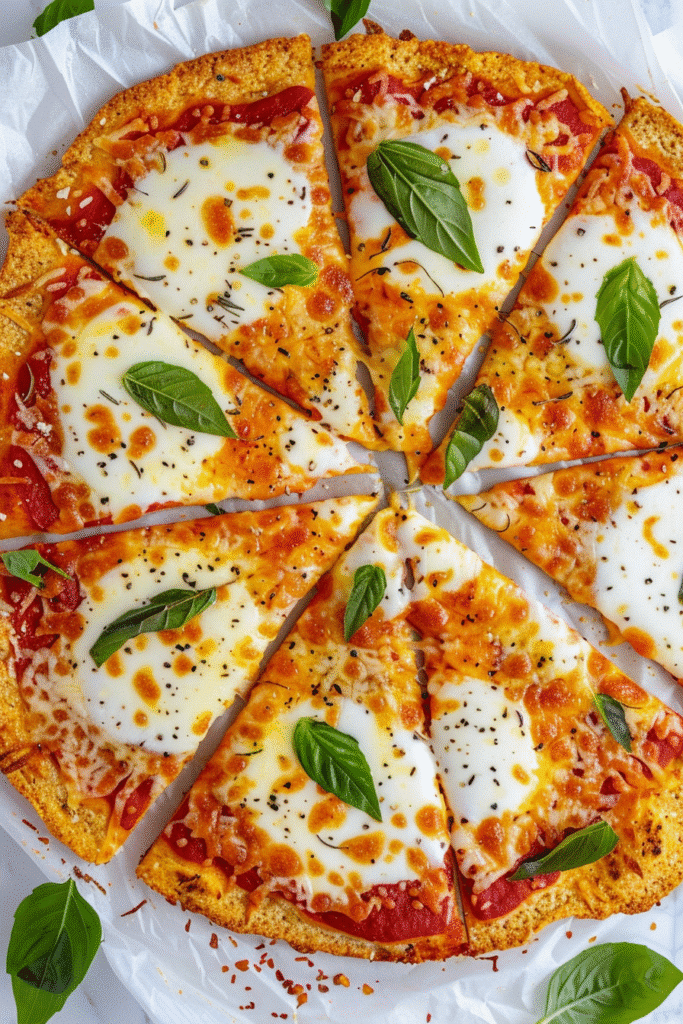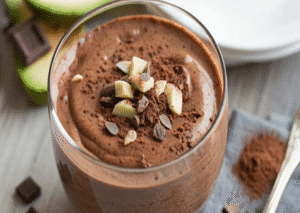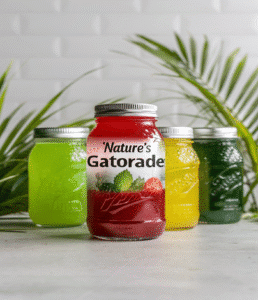If you’re searching for a pizza crust that’s low in carbs, high in protein, gluten-free, and easy to make, the keto cottage cheese egg pizza crust might just be your new favorite recipe. Unlike traditional crusts loaded with refined flour or even fathead doughs that rely heavily on mozzarella, this recipe blends cottage cheese and eggs for a deliciously light yet sturdy crust alternative that fits perfectly into a keto lifestyle.
In this article, we’ll explore why this crust is a game-changer, how to make it step-by-step, and how to avoid common mistakes like sticky pans or soggy centers. You’ll also find expert tips on toppings, prep-ahead options, substitutions, and FAQs answered in-depth. Whether you’re keto-curious or a long-time low-carb lover, this guide will help you master the ultimate keto cottage cheese egg pizza crust without flour.
Table of contents
Table of Contents
ToggleTable of Contents
What is a Keto Cottage Cheese Egg Pizza Crust?
Understanding the core ingredients: cottage cheese, eggs, and keto essentials
This crust is mainly made with just two ingredients: keto cottage cheese egg pizza crust. Together, they create a high-protein, low-carb base that firms up in the oven into a pliable, slightly chewy crust. Unlike almond flour or coconut flour crusts, which can feel heavy or grainy, the keto cottage cheese egg pizza crust base has a smoother finish.
Here’s why it works:
- Cottage cheese adds a creamy texture and tangy flavor, while also providing a rich source of casein protein and calcium.
- Eggs act as a natural binder, helping to firm the crust as it bakes.
- The mixture mimics the function of dough without any gluten or carbs from flour.
You can optionally add a small amount of grated cheese (like parmesan or mozzarella), herbs, and garlic powder for extra flavor.
PrintKeto Cottage Cheese Egg Pizza Crust
5 Stars 4 Stars 3 Stars 2 Stars 1 Star
No reviews
This easy 2-ingredient low-carb cottage cheese pizza crust comes together quickly and delivers a deliciously crisp, thin crust with only 3 net carbs per serving.
- Total Time: 25 minutes
- Yield: 3 servings 1x
Ingredients
- 1 cup cottage cheese
- 2 eggs
- ¼ cup shredded mozzarella
- Garlic powder, Italian herbs, salt
Instructions
- Blend cottage cheese until smooth
- Mix all ingredients
- Spread on parchment and bake 375°F for 18–22 min
- Cool before adding toppings
- Bake 10 min more after topping
- Author: Jessica Lupone!
- Prep Time: 5 minutes
- Cook Time: 20 minutes
- Category: Keto
- Method: Oven
- Cuisine: Italian
- Diet: Gluten Free
Nutrition
- Calories: 110 cal
- Fat: 7g
- Protein: 11g
How it differs from traditional and fathead Keto Cottage Cheese Egg Pizza Crust
Let’s break it down:
| Type of Crust | Main Ingredients | Carbs (Approx. per serving) | Gluten-Free? | Texture |
|---|---|---|---|---|
| Traditional Pizza Crust | White flour, yeast, water, oil | 20g+ | ❌ | Chewy, bread-like |
| Fathead Crust | Mozzarella, almond flour, cream cheese | 3-5g | ✅ | Dense, rich |
| Cottage Cheese Egg Crust | Cottage cheese, eggs, optional cheese | 1-2g | ✅ | Light, flexible, crispy edges |
This crust is also:
- Faster to prep than fathead dough
- Lighter in fat and calories
- Better for dairy-sensitive individuals using lactose-free cottage cheese
Check out this Burnjaro Pink Salt Trick to boost your overall keto lifestyle alongside this crust recipe.
Why Choose Keto Cottage Cheese Egg Pizza Crust?
Nutritional benefits of Keto cottage cheese egg pizza crust for low-carb diets
Cottage cheese is a powerhouse ingredient for keto dieters, especially when used creatively—like in this low-carb pizza crust. It’s naturally low in carbohydrates and high in protein, making it ideal for maintaining ketosis without sacrificing flavor or texture.
Here’s a breakdown of its nutritional perks (based on ½ cup, full-fat):
| Nutrient | Amount | Benefit for Keto |
|---|---|---|
| Protein | 13g | Helps build muscle and keeps you full |
| Carbohydrates | 3-4g | Very low, fits within daily keto limits |
| Fat | 5g | Adds creaminess and sustains energy |
| Calcium | 125mg | Supports bone health |
| Sodium | Varies | Essential electrolyte balance for keto |
What sets cottage cheese apart is its casein content, a slow-digesting protein that keeps you feeling full longer—a key advantage when trying to reduce snacking and maintain ketosis.
Comparing cottage cheese vs. Greek yogurt or ricotta in keto cooking
Cottage cheese isn’t your only option, but it often comes out ahead when making crusts for these reasons:
| Ingredient | Texture in Crust | Carb Content | Keto Score |
|---|---|---|---|
| Cottage Cheese | Firm, chewy | 3–4g | ✅✅✅✅✅ |
| Greek Yogurt | Softer, can be runny | 6–8g | ✅✅ |
| Ricotta Cheese | Creamy but looser | 6–7g | ✅✅✅ |
- Greek yogurt has more carbs and doesn’t firm up as nicely unless combined with other thickeners.
- Ricotta adds great flavor but tends to create a wetter crust unless baked longer.
- Cottage cheese, especially when blended, yields a consistent crust that holds up to toppings and slices cleanly.
Looking for a sweet treat that’s still keto-friendly? Don’t miss our Ice Cream with Rice Krispies combo—a surprisingly low-carb hack using high-protein ingredients.
How to Make Keto Cottage Cheese and Egg Pizza Crust (Step-by-Step)
Ingredient list and kitchen tools you’ll need
To make the perfect keto cottage cheese egg pizza crust, you don’t need fancy tools—just a few wholesome ingredients and basic equipment. Here’s everything you’ll need:
Ingredients: keto cottage cheese egg pizza crust
- 1 cup full-fat cottage cheese
- 2 large eggs
- ¼ cup of shredded mozzarella or parmesan (optional – adds extra flavor and helps firm up the crust)
- ¼ tsp garlic powder
- ¼ tsp Italian seasoning (optional)
- Salt and pepper to taste
- 1 tsp olive oil (for greasing or brushing crust)
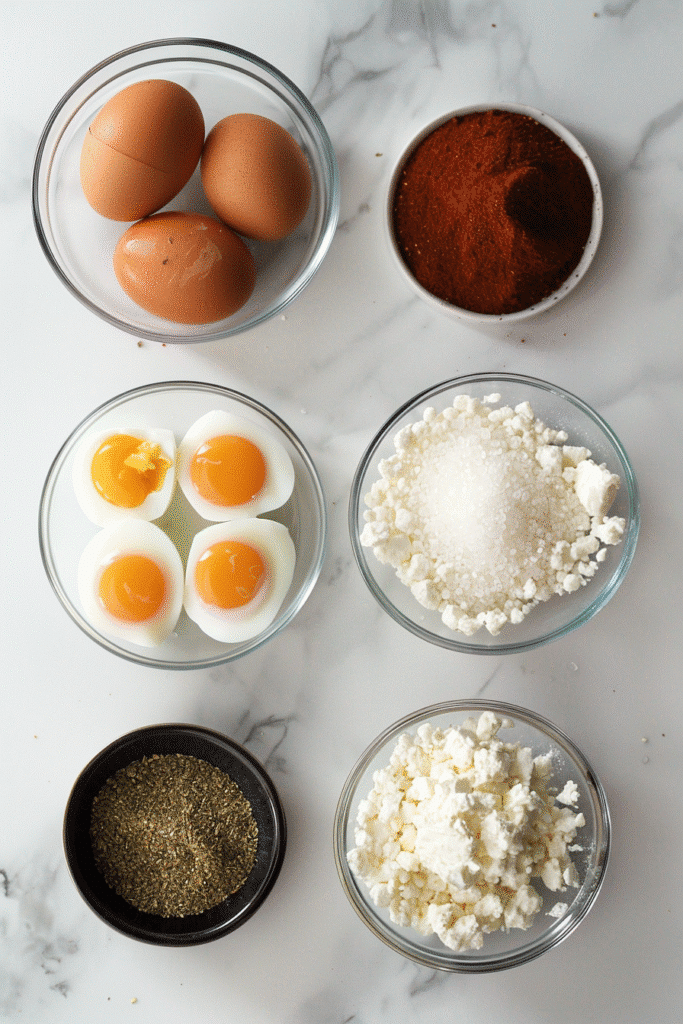
Optional toppings (after baking crust):
- Sugar-free tomato sauce or pesto
- Cooked sausage, pepperoni, olives, or mushrooms
- Fresh mozzarella or cheddar
- Fresh basil, arugula, or red pepper flakes
Tools:
- Mixing bowl
- Blender or immersion blender (to smooth the cottage cheese)
- Parchment paper or silicone baking mat
- Baking sheet or pizza pan
- Spatula
Don’t miss our Natural Mounjaro Recipe for a detox drink that pairs perfectly with this low-carb keto cottage cheese egg pizza crust night!
Preparation, baking temperature, and timing explained
Follow this easy method to create a gluten-free, low-carb keto cottage cheese egg pizza crust that holds up like the real deal.
Step-by-step instructions: keto cottage cheese egg pizza crust
- Preheat your oven to 375°F (190°C). Line a baking sheet with parchment paper and lightly oil it to prevent sticking.
- Blend your base: Add the cottage cheese to a blender, or use an immersion blender in a bowl, and blend until completely smooth and creamy.
- Mix ingredients: In the bowl, combine the blended cottage cheese with eggs, shredded cheese, garlic powder, seasoning, and a pinch of salt. Mix until fully integrated.
- Shape the crust: Pour the mixture onto the lined baking sheet and spread it into a circle or rectangle using a spatula. Spread the mixture to about ¼ inch thick—any thinner and it might tear, any thicker and it won’t crisp up properly.
- Bake the crust: Place it in the preheated oven and bake for 18–22 minutes, or until golden around the edges and firm in the center.
- Cool before topping: Remove the crust and let it rest for 5 minutes before adding sauce and toppings. This helps it firm up and prevents sogginess.
- Final bake (optional): After adding toppings, return the crust to the oven for another 8–10 minutes until the cheese is melted and bubbly.
Tips:
- For a crispier crust, use the broiler for 2–3 minutes at the end of the final bake.
- Letting it cool before slicing is key to avoiding a soggy base.
Discover great ideas like this Brazilian Mounjaro Detox Drink to support your keto cottage cheese egg pizza crust success beyond the plate.
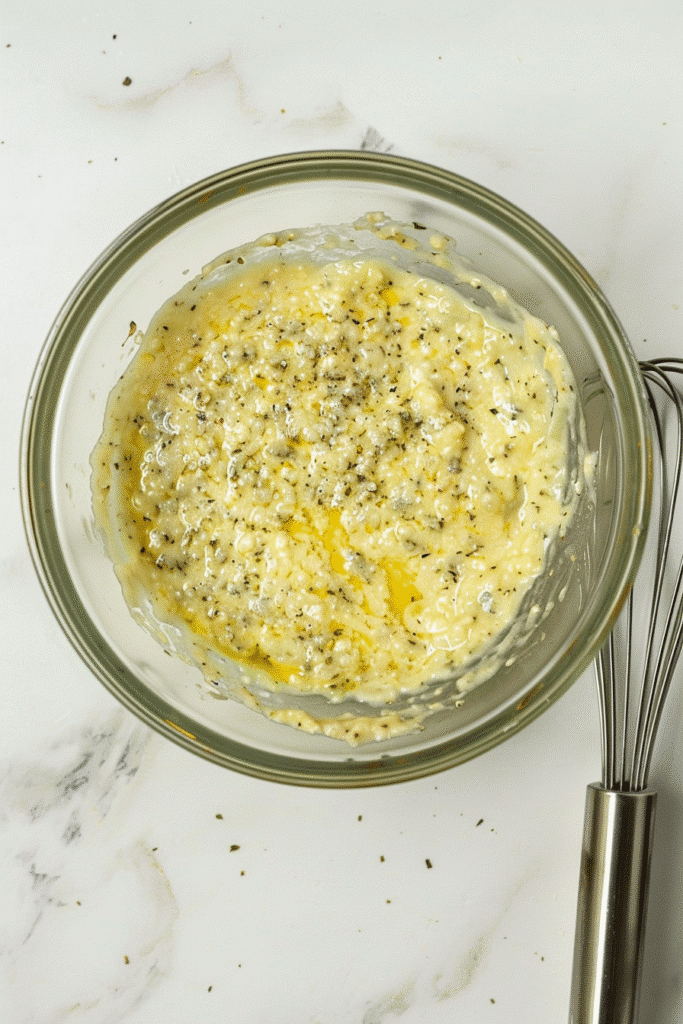
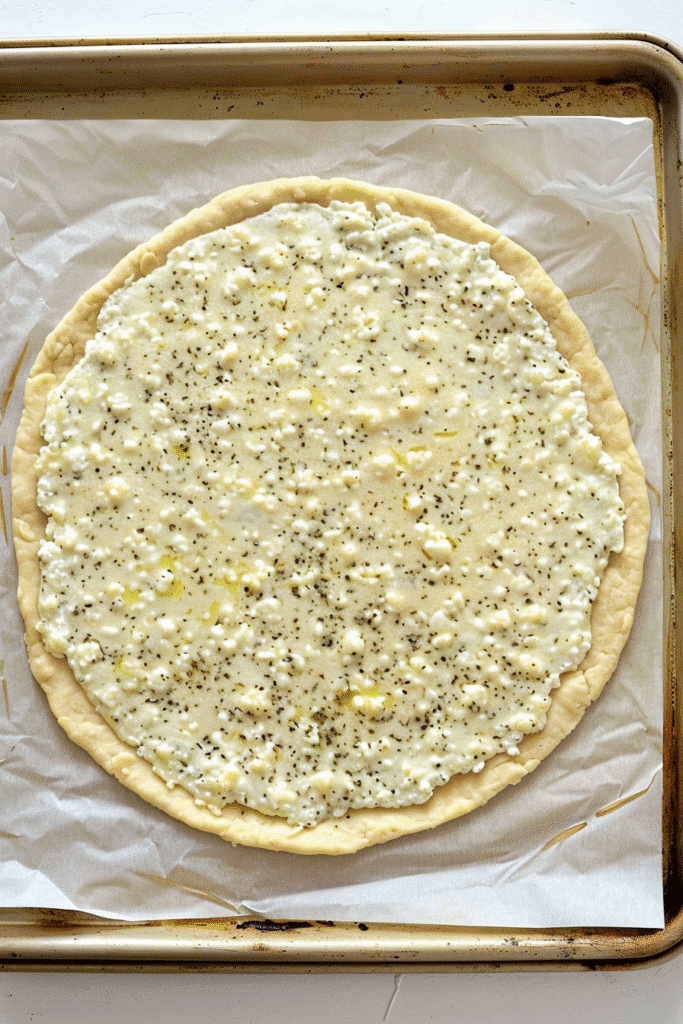




Tips for a Perfect Gluten-Free Keto Cottage Cheese Egg Pizza Crust Every Time
Why your pizza crust might stick to the pan (and how to prevent it)
One of the most common complaints about cottage cheese-based crusts is sticking, especially if you skip a few key prep steps. Let’s solve that.
Top reasons your keto cottage cheese egg pizza crust sticks:
- No parchment paper or silicone mat
- Not enough oil or fat on the pan
- Over-mixing (too much moisture makes it gluey)
- Underbaking (wet center causes sticking)
Solutions to prevent sticking:
| Problem | Solution |
|---|---|
| Crust sticks to foil or bare pan | Always use parchment paper or a silicone baking mat |
| Not enough oil | Lightly brush or spray oil on paper/mat before adding batter |
| Too moist batter | Use full-fat cottage cheese and drain any excess liquid |
| Crust still soft after baking | Bake longer until edges turn golden and center firms up |
Using a parchment-lined tray is non-negotiable. It’s the easiest fix for a clean, firm crust that lifts effortlessly.
Is it necessary to blend the cottage cheese before baking?
Yes, blending is crucial—and here’s why:
- Improves texture: Cottage cheese contains curds that won’t completely melt when baked, so blending helps create a smoother, more cohesive crust.
- Better structure: A fully blended mixture binds more evenly with eggs and cheese, which results in a firmer, more flexible crust.
- Easier slicing: Without chunky curds, the final crust cuts cleaner and feels more like traditional pizza dough.
How to blend it right:
- Use a blender or immersion blender for 15–20 seconds until creamy.
- If you want added texture, blend ¾ of the cheese and leave ¼ unblended for a rustic finish.
Check out Burnjaro Pink Salt Hack while you’re baking—it’s a keto-friendly electrolyte tip that pairs well with your pizza nights.
Topping Your Keto Pizza Without Breaking the Crust
Will it hold up to heavy toppings? Structuring your pizza smartly
Yes—it absolutely can hold up, but only if you follow smart topping strategies. The base made from cottage cheese and eggs might look delicate, but it firms up nicely when baked properly and handled with care.
Here’s how to help it stay sturdy:
| Tip | Why It Works |
|---|---|
| Pre-bake the crust fully before adding toppings | Prevents sogginess and undercooked centers |
| Let the crust cool for 5–7 minutes | Firms it up and reduces steam underneath |
| Use less sauce or choose thicker sauces | Excess liquid makes it mushy |
| Distribute toppings evenly | Prevents one side from collapsing or breaking |
| Avoid stacking wet veggies or raw meat | These release water and weaken the crust |
So, while your crust won’t have the chew of New York-style dough, it’ll hold its shape when sliced and eaten—no fork and knife required!
Best keto-friendly toppings that complement the crust
When building a pizza with a keto cottage cheese egg pizza crust, stick with low-moisture, high-fat, and low-carb toppings that enhance the flavor without overpowering it.
Top keto-approved toppings:
| Protein | Veggies | Cheeses & Sauces |
|---|---|---|
| Grilled chicken breast | Spinach, mushrooms, bell peppers | Mozzarella, parmesan, feta |
| Pepperoni or salami | Zucchini, olives, onions | Sugar-free tomato or pesto |
| Ground sausage or bacon | Jalapeños, arugula, tomatoes | Garlic cream sauce (no flour) |
Flavor pairings that work great:
- Spicy pepperoni + olives + mozzarella
- Sausage + sautéed spinach + feta
- Grilled chicken + pesto + cherry tomatoes
Pro tip: Less is more. A max of 3 toppings + cheese will keep the crust from bending or falling apart.
Storage, Meal Prep, and Make-Ahead Tips
Can you make the dough ahead of time? Best storage practices
Absolutely—you can make the crust batter or even bake the crust ahead of time for added convenience. It stores surprisingly well, making it a go-to for low-carb meal prep.
Make-ahead options:
| Prep Option | Storage Method | Shelf Life |
|---|---|---|
| Unbaked batter | Airtight container in fridge | 1–2 days |
| Pre-baked crust | Cool, wrap in parchment + foil | 3–4 days (fridge) |
| Fully baked with toppings | Airtight container or meal-prep tray | 2–3 days (fridge) |
Tips for prepping ahead:
- Always cool the baked crust completely before storing to avoid sogginess.
- If storing the batter, whisk again before baking to recombine ingredients.
- Stack crusts between sheets of parchment if prepping multiples.
How to freeze and reheat for future meals
Freezing this keto crust is not only possible—it’s ideal. Whether plain or topped, it thaws and crisps back up beautifully.
How to freeze: keto cottage cheese egg pizza crust
- Bake the crust fully.
- Let it cool completely.
- Wrap tightly in plastic wrap, then foil.
- Label with date and store flat in the freezer.
Pro tip: If you’re freezing a pizza that’s already topped, flash freeze it on a tray first, then wrap.
Reheating instructions:
| Method | Instructions |
|---|---|
| Oven (Best) | Bake at 375°F for 10–12 min directly on rack |
| Air Fryer | Heat at 350°F for 5–6 min (great for crispy edges) |
| Microwave | 60–90 seconds, but crust will soften |
Ingredient Substitutions and Variations for keto cottage cheese egg pizza crust
Can Greek yogurt be used as a substitute for cottage cheese?
While Greek yogurt is popular in low-carb recipes, it doesn’t make an ideal substitute for cottage cheese in pizza crusts due to differences in texture and moisture content.
Key differences:
| Ingredient | Texture in crust | Carb content (per ½ cup) | Suitability |
|---|---|---|---|
| Cottage cheese | Firm, crisp | 3–4g | ✅✅✅✅✅ |
| Greek yogurt | Softer, more fragile | 6–8g | ✅✅ |
Greek yogurt produces a softer and more cake-like crust, which may not hold up as well to toppings. It also has more natural sugars, increasing the carb count. However, if you’re out of cottage cheese and need a quick fix:
- Use strained Greek yogurt to remove excess moisture.
- Add an extra egg or 1 tbsp of almond flour for structure.
- Expect a lighter texture, better for flatbread-style pizzas.
Enhance the flavor by mixing in herbs, spices, or a blend of cheeses.
One of the best things about this keto egg and cottage cheese crust is that it’s a blank canvas. Customizing it with herbs, seasonings, and cheeses lets you change the flavor profile while staying on track with your macros.
Savory crust add-ins (mix before baking):
- 1 tsp Italian seasoning – classic pizza vibes
- ½ tsp garlic powder + onion powder – richer flavor
- 1 tbsp grated parmesan – adds crispness
- Crushed red pepper flakes – for heat
- Fresh chopped basil or oregano – elevate the aroma
Cheese mix-ins:
- Shredded cheddar – sharp flavor, golden crust
- Mozzarella – creamy melt, mild taste
- Asiago or gouda – great for smoky crust variation
Nutritional Info and How It Fits Into Your Keto Goals
Macros breakdown: carbs, protein, fat per slice
One of the biggest reasons keto eaters love this cottage cheese egg crust is its macro-friendly profile—low in carbs, high in protein, and moderate in fat. That makes it ideal not just for weight loss, but also for managing blood sugar and staying in ketosis.
Here’s a basic macro breakdown for a single serving of the crust (without toppings), assuming it’s sliced into 4 servings:
| Nutrient | Per Slice (¼ of 10-inch crust) |
|---|---|
| Calories | ~110–125 kcal |
| Net Carbs | 1.5g |
| Protein | 11g |
| Fat | 7g |
| Fiber | 0g |
Macros may vary depending on the brand of cottage cheese or if extra cheese is added.
This pizza base is:
- Diabetes-friendly
- Grain-free and gluten-free
- Keto-approved
- High in satiating protein, helping to keep hunger at bay
Whether you’re following strict keto, lazy keto, or just cutting carbs for better energy and digestion, this recipe checks every box.
Great for keto, gluten-free, and low-glycemic meal plans
Let’s break down why this crust works across multiple dietary approaches:
✅ Keto-friendly:
It stays well under the daily 20–30g net carb limit with room to spare for toppings and sides.
✅ Gluten-free:
It contains zero grains or wheat, making it perfect for gluten intolerance or Celiac-safe meals.
✅ Low-glycemic:
It won’t spike your blood sugar, thanks to its high protein and fat content paired with minimal carbs.
This recipe is also ideal for batch meal prep, helping busy individuals or families stay on track without sacrificing flavor or convenience.
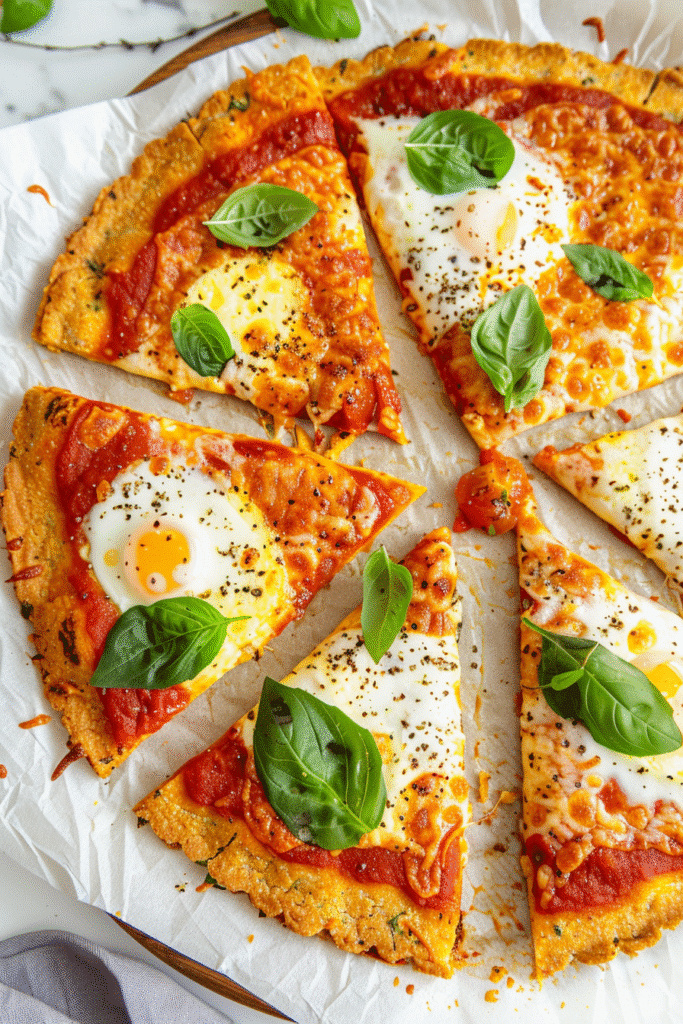
Common Mistakes to Avoid with This Crust
Overbaking or underbaking: how to test doneness
When working with a cheese-and-egg-based crust, baking time is everything. Get it wrong, and you’ll either end up with a rubbery base or a gooey mess.
Here’s how to bake it just right:
- Underbaked crusts are soft in the middle and fall apart under toppings.
- Overbaked crusts become too crisp, cracking when sliced or folded.
✅ Signs your crust is fully baked:
- The edges are golden brown
- The center looks dry, not shiny
- The crust lifts easily off parchment with a spatula
- It feels firm when you tap the center with a fork
Tip: Start checking at 18 minutes and go up to 22, depending on oven variation. Always let it cool for 5–10 minutes before adding toppings or slicing—it continues to set while cooling.
Watery crusts: causes and fixes
If your crust comes out wet or soggy, it’s likely due to excess moisture either in the ingredients or cooking method.
Common causes of a watery keto crust:
| Issue | How to Fix |
|---|---|
| Watery cottage cheese | Use full-fat or strain before blending |
| Didn’t blend cheese | Always blend to smooth and reduce liquid pockets |
| Added too many wet toppings | Limit raw veggies and high-moisture cheese |
| Skipped cooling before topping | Let crust set 5–10 minutes before handling |
| Baking temp too low | Bake at 375°F minimum for full set and crisp |
If you make it once and find the center too moist, next time:
- Use a pizza stone or perforated pan for airflow
- Bake longer and finish under the broiler for a crisp top layer
Conclusion: The Simpler, Smarter Keto Cottage Cheese Egg Pizza Crust Option
If you’re looking for a gluten-free, low-carb pizza crust that’s light, satisfying, and easy to customize, the keto cottage cheese egg pizza crust is a must-try. With minimal ingredients and a short bake time, it offers an ideal alternative to almond flour or fathead dough without sacrificing texture or taste.
Whether you’re on a strict ketogenic diet or simply cutting carbs, this crust delivers flavor, function, and flexibility. It’s meal-prep friendly, freezable, and endlessly customizable—everything a busy, health-conscious eater needs.
Enjoy the keto cottage cheese egg pizza crust
For more recipes Follow me in our Social media
Facebook: https://www.facebook.com/profile.php?id=61573913076847
Pinterest: https://www.pinterest.com/momandgrandmacooks/
Medium: https://medium.com/@momandgrandmacooks
FAQs: Keto Cottage Chesee Egg Pizza Crust
Is this Keto cottage cheese egg pizza crust gluten-free?
Yes, 100%. This crust contains no wheat, flour, or grains, making it completely gluten-free. It’s perfect for those with gluten sensitivity or celiac disease and still delivers that satisfying pizza texture.
Why is my pizza crust sticking to the pan?
Sticking usually happens if you skip parchment paper or don’t grease the baking surface well. Always use parchment or a silicone mat and lightly brush with olive oil for an easy release after baking.
Can I use Greek yogurt instead in a keto cottage cheese egg pizza crust?
You can, but it’s not ideal. Greek yogurt has a higher moisture content and fewer binding proteins than cottage cheese, which can lead to a softer, less structured crust. For best results, stick with full-fat cottage cheese.
Will this pizza crust hold up to more toppings?
Yes, as long as you bake the crust fully and allow it to cool before topping. Avoid wet ingredients like raw tomatoes or mushrooms unless pre-cooked to prevent sogginess.
Do I need to blend the cottage cheese first?
Yes. Blending cottage cheese smooths the curds, helps it mix evenly with eggs and cheese, and results in a firmer, more cohesive crust that slices and lifts better.
Can this pizza dough be made in advance?
Absolutely. You can prep the batter and store it for 1–2 days in the fridge or bake the crust ahead of time and freeze it. It reheats perfectly in the oven or air fryer.

